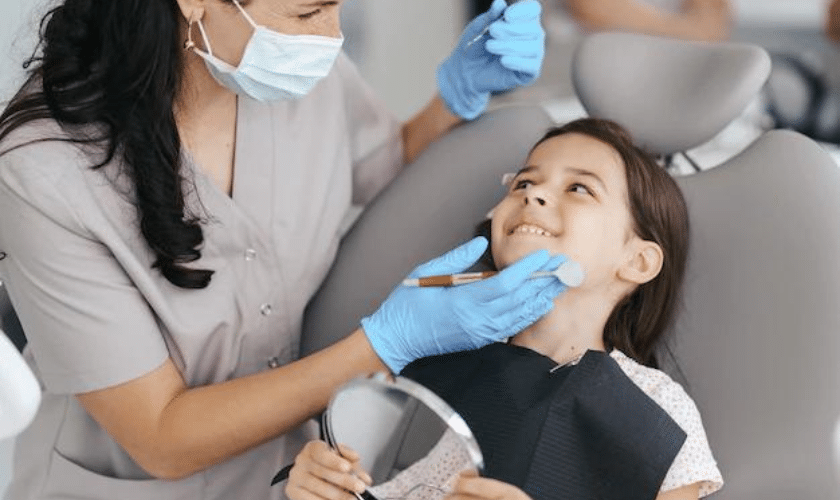
5 Things That Include Under Early Orthodontics Treatment
Early orthodontic treatment is vital for patients who want to improve their smile and bite. By intercepting problems early on, treatment can be shorter and less expensive in the long run. Here are 5 things that commonly include early orthodontic treatment: 1. Abnormalities in tooth position or crowding 2. Impacted teeth 3. jaws that grow too much or not enough 4. poor oral habits such as thumb sucking 5. an abnormal bite (malocclusion) such as underbite, overbite, or crossbite. If you think your child may need early orthodontic intervention, contact our office to schedule a consultation! Dr. Smith will work with you to create a customized treatment plan that meets your child’s needs.What is Early Orthodontics Treatment?
Early orthodontics treatment is a type of preventative dental care that focuses on improving the alignment of the teeth, mouth, and jaw. Its main purpose is to address any potential issues with the positioning of a patient’s teeth early on, saving them from complex and potentially costly treatments in the future. Early orthodontic treatment typically involves an examination by an orthodontist, who can then provide information about braces and other corrective procedures. If a child has an overbite or underbite, crowded or protruding teeth, these problems can be addressed during early treatment instead of waiting until adulthood when more invasive corrections may be needed. It has been shown that early intervention can help improve facial balance, symmetry, and oral health which leads to improved confidence levels and overall well-being.Why Is It Important to Seek Early Treatment for Your Child’s Teeth Development?
Seeking early treatment for your child’s teeth development is an essential part of protecting their dental and overall health. By performing routine checkups, a pediatric dentist can quickly detect any issues or emerging problems that may arise during your child’s teething period. Early dental visits are beneficial in addressing issues before they become more serious and help to prevent long-term implications. Treatment can be tailored specifically to the individual needs of your child and address factors such as diet and home care. Early intervention allows for a smoother transition when your child’s adult teeth develop and also helps ensure good oral habits are established early on in life. It is important to remember that good oral healthcare starts with visiting the dentist regularly, so make sure you schedule regular appointments for your little one!When Should You Bring Your Kid in For an Orthodontic Evaluation?
Taking your child in for an orthodontic evaluation can be an important first step to healthy teeth and jaws. Generally, it’s recommended that a child be brought in around the age of seven for a check-up. At this stage, an orthodontist will examine your child’s teeth, jaws, and bite to determine how their adult teeth may potentially align. If necessary, the orthodontist may also recommend preventative treatments such as expansion, removal of baby teeth, or limited braces to ensure that your child is well-positioned for the rest of their life. Orthodontists can generally spot specific issues that might otherwise go unnoticed and can be instrumental in helping create the optimal dental structure during early adolescence and puberty. Taking action now can serve to offset more serious problems during adulthood which is why bringing your kid in for an orthodontic evaluation when they are around seven years old is so important.How Do Dentists Evaluate Children for Early Treatment?
Dentists typically evaluate children for early treatment beginning at the age of three. The evaluation is thorough and includes assessing a child’s oral hygiene, jaw joint function, the potential for an eruption of permanent teeth, the presence of dental caries, and any other problems with their teeth or gums. Early intervention and diagnosis are key to preventing serious issues from occurring in the future and dentists take preventive measures such as cleaning plaque off teeth, applying topical fluoride, and sealing out bacteria with sealants to protect the child’s teeth before any potential problem surfaces. Dental visits should be regular so that any emerging concerns are addressed early and cavities are detected earlier than what would be during a general checkup.What Are Some of the Most Common Treatments Offered Under Early Orthodontics?
Early Orthodontics is a type of corrective treatment used to straighten teeth and help maintain good oral hygiene. Some of the most common treatments offered under Early Orthodontics include braces, palatal expanders, space maintainers, and interceptive appliances. Braces are a popular orthodontic option for aligning teeth and correcting any malocclusions. Palatal expanders are used to widen the upper jaw for better alignment of the teeth. Space maintainers help keep open spaces between teeth that may be occupied by future permanent teeth, while interceptive appliances can be used to prevent further development of wrong bite patterns and misproportioned jaws. Ultimately, each patient’s plan will depend on their individual needs as identified by their orthodontist. Early orthodontic treatment is important for children in order to correct misaligned teeth and jaws. Our Jesup Orthodontist can evaluate whether a child needs early treatment through evaluations that consider the growth of the face and mouth, as well as how the teeth fit together. There are many common treatments available under early orthodontics, such as braces and other devices that will help to straighten teeth over time. If you think your child might need early orthodontic treatment, be sure to bring them in for an evaluation with their dentist soon.Tags: Orthodontics Treatment
